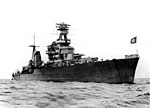Lakhta, Saint Petersburg
Primorsky District, Saint Petersburg
Lakhta (Russian: Ла́хта; Finnish: Lahti) is a historical area in Lakhta-Olgino Municipal Okrug of St. Petersburg, Russia, situated west of Lake Lakhta (hence the name). It was formerly owned by Peter the Great, Count Grigory Orlov, and Count Stenbock-Fermor (whose 19th-century residence survives). The Lakhta railway station of the Primorsky Railway connects Lakhta to Central Saint Petersburg. The historical area of Olgino lies south-west of Lakhta.
Excerpt from the Wikipedia article Lakhta, Saint Petersburg (License: CC BY-SA 3.0, Authors).Lakhta, Saint Petersburg
Морская улица, Saint Petersburg Lakhta (округ Лахта-Ольгино)
Geographical coordinates (GPS) Address Nearby Places Show on map
Geographical coordinates (GPS)
| Latitude | Longitude |
|---|---|
| N 59.9895 ° | E 30.160388888889 ° |
Address
Морская улица 8
197229 Saint Petersburg, Lakhta (округ Лахта-Ольгино)
Saint Petersburg, Russia
Open on Google Maps









